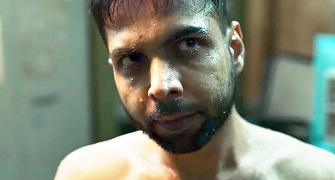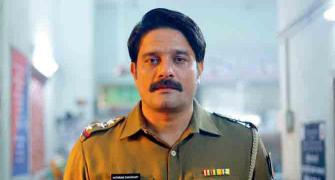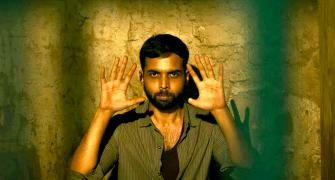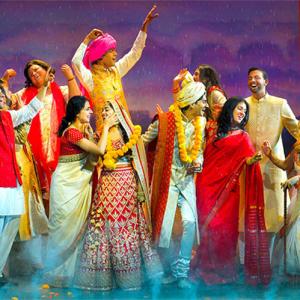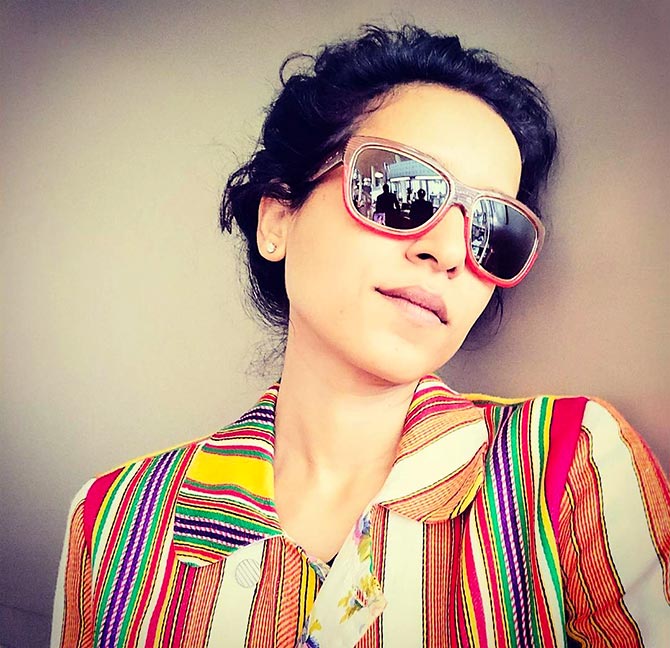'What guides Monsoon Wedding through and through is Mira Nair's openness as a film-maker,' observes Sreehari Nair.
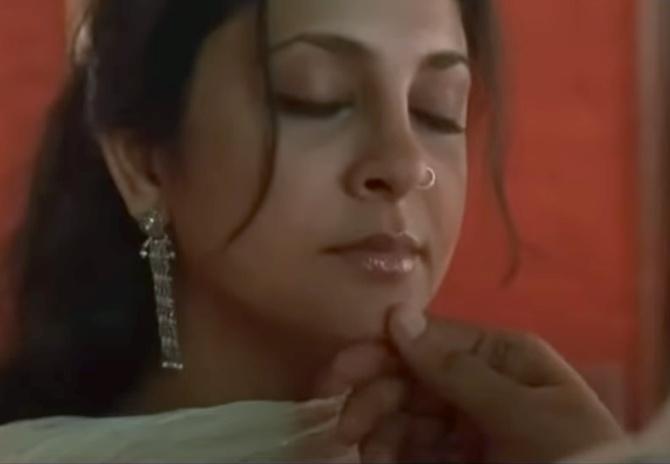
He walks through the door, and there's a shudder in her loins.
No sooner does Tej Puri (Rajat Kapoor) make his first appearance in Monsoon Wedding, than he becomes a Mystery Man: A camera subject of curious proportions; and seen specifically through Ria Verma's (Shefali Shetty) eyes, the source of her longing and her despair.
It's with a lot of derring-do that Director Mira Nair and Writer Sabrina Dhawan mount the Ria-Tej sequences.
While there's no background score that suggests heartbreak, or the typical trading of half-sentences, the impression is one of a relationship that hadn't fulfilled its early promise.
We can see that he exerts considerable psychological hold over her, and that she, of a fluttery, fluid temperament, is frozen by his mere presence.
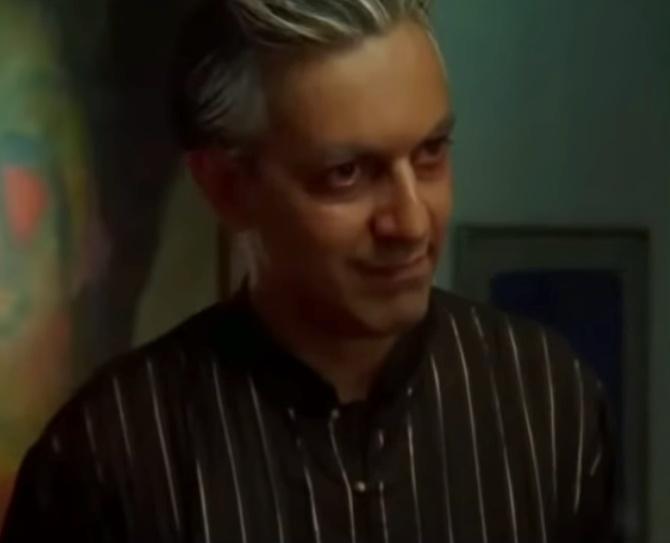
The Ria-Tej section -- which begins with Ria's helpless stare, and passes from Tej's show of generosity, to her tears, to his rather gentlemanly invasions of privacy, to Ria's revelation that Tej had sexually abused her as a child, and finally to Tej's mumbling comebacks and his public humiliation -- is the jolt that pushes Monsoon Wedding (a wonderful film, even otherwise) into the realm of permanent greatness.
And it's a tribute to Mira Nair's artistry that she treats this most tricky section of the movie, not as an expose, not as vulgar sensationalism, not even as fodder for well-meaning NGOs, but, daringly, as a tragedy of two people.
Upon revisiting the film after almost 20 years, I could recall my socially-minded younger self being moved, by Shefali's intensity and, by the angsty antsiness of her uncle, Lalit Verma (played by Naseeruddin Shah). The luster in those characters was still there; what I wasn't ready for was the precision of Tej Puri.
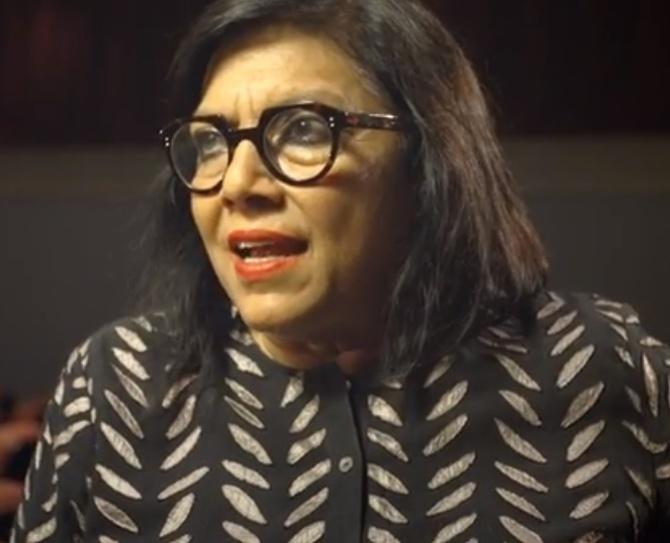
Rajat Kapoor's was the performance that had broken through the barricades of time -- and I could see now that it was his immensely skillful interpretation of the pedophile that had helped deepen and enlarge Mira Nair's conception.
Unlike Ria and Lalit, Tej is granted no moments of upheaval, no real epiphany. In his case, there's no glory to be gained out of a speaking a pungent line of dialogue.
He has no release-points; and his reaction to being unmasked is the closest he gets, to hitting a dramatic note. And yet, Rajat Kapoor, never once, allows Tej Puri's side of the frame to be diminished of meaning.
It is Kapoor's insistence on not wearing his character thin that gives this searing section of Monsoon Wedding its shocking and unexpected lushness. It is his performance that elevates this Exploitation Cinema-material to the level of 'a beautiful thing'.
Too many movies of this cadre have been spoiled by their efforts to vilify such negative characters, on sight. They arrive, as if with name-tags and, with a score that seems to ask: "Don't you smell the rot on this man?"
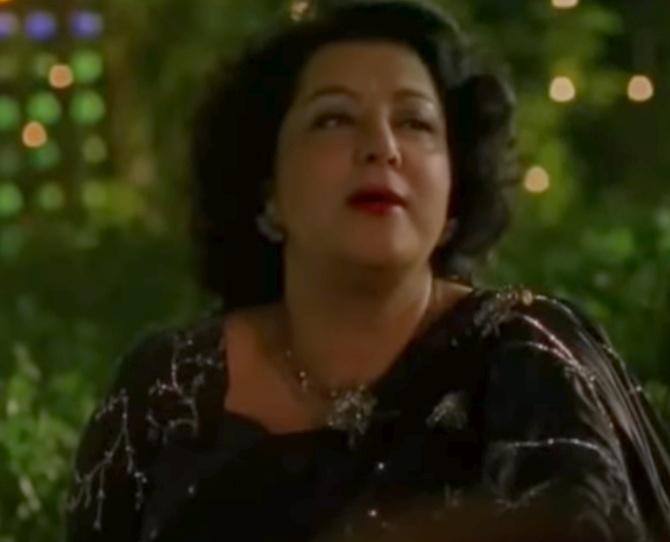
In Monsoon Wedding, America-waale Tej Paaji gets a welcome reserved for matinee idols, and then Rajat Kapoor cranks it up a notch -- he doesn't bask in the cinematic energy now shining upon him; instead, he works toward dispelling all attention.
The locus of this great performance is this Tug of War it sets off -- between a desire for normalcy and a howl from the past.
By throwing himself into the crowd (even as Ria Verma picks him out from a sea of overlapping faces), by dragging his jet-lagged leg awkwardly from kith to kin, a quick smile here, a handshake there, Kapoor reveals to us the true nature of the evil at hand: he's not a glaring baddie but an Everyman.
And yet, what a close view he gives us, of the Culture of Exploitation -- complete with its foolhardiness, its smugness, and its self-deceptions.
Ah, the tragic force contained in the realisation that he isn't our classic villain with an aptitude for shallow sadism, but a modest figure trying to find his place among a row of grand family portraits.
In his eyes, there's sincere curiosity for people, and on his face, the pride of having lived in worlds, and dabbled in experiences, that others haven't.
This is the face of a man who has rationalised all of his sins -- he sees himself as an explorer now, maybe even an artist!
When Tej first sights Ria in a room full of people, he reacts like a sculptor who has accidentally run into one of his early masterpieces.
She is broken in all the wrong places, and the image of her fills him up with old passions: The face of the tragedy, he has chiseled into existence, he tilts toward his face and intones: "God Bless! Very Good."
To our journalistic side, this is a certified social evil we're talking about, but the artist gives us pause: he shows us that this is also an act of extreme vanity.
It's because Rajat Kapoor is so attentive to the many inner rhythms of Tej Puri, it's because he, in an odd sense, is able to justify the character to himself, that the scale of Ria's tragedy hits us so hard.
It's a marker of Kapoor's supreme gifts as an actor, that we don't walk away from the Ria-Tej story with our egos massaged, that we walk away from it measuring the minor degrees that separate us from someone like Tej.
And while I have been told that he was reluctant to take it on, the part, I think, freed him up tremendously, and made him less self-conscious.
It was with his portrayal of Tej Puri that Rajat Kapoor graduated from the class of Indian Indie film figures (an elitist class, headlighted back then by Rahul Bose).
Since then, he has been working feverishly as a director, making in the process, a series of half-masterpieces. And yet, it's for his work in front of the camera that I'll forever be his fan.
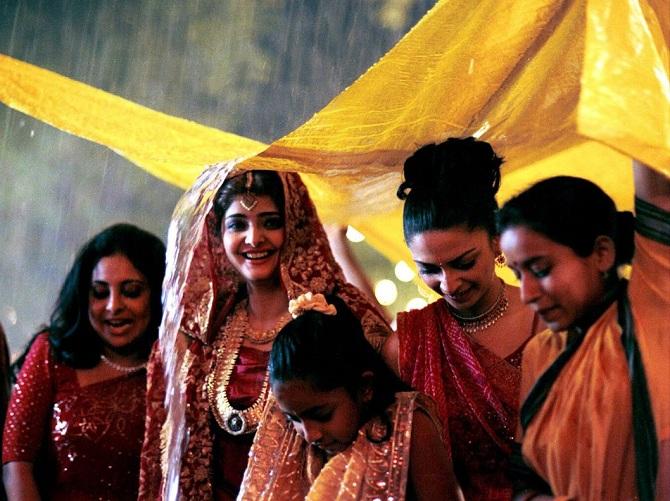
The statuesque nobility that he brings to his role of the wicked witch-hunter in Pari; the self-hating Muslim in Mulk turned into a sacred monster -- this flair for debanalising characters is a sign of greatness in acting, and Rajat Kapoor is one of our greatest living actors (He deserves that title more than so many of our other actors who either haven't done enough to earn it, or have over the years squandered their claim to it).
And Kapoor's this journey to greatness, I am sure, began 19 years ago, when he managed to invest a trope, a label, with genuine three-dimensionality. It was then that he made the leap from being an actor who could "think intelligently" to an actor who could "feel intensely."
As much as Rajat Kapoor's brilliance, what guides Monsoon Wedding through and through is Mira Nair's openness as a film-maker.
She manages to be "sensitive," but in the way that the best artists are sensitive -- which is to say, by not just showing us how the oppressed has been wronged, but by also showing us the ocean inside the oppressor.
Most film-makers would be blind to the sly talents of Tej Puri, but Nair isn't: a passing shot tells us that he really knows his way around little girls.
It is Mira Nair's lush and openhanded approach toward a subject like 'child abuse' that ultimately prevents this story from becoming a measly social document.
She turns it, at once, into something worthy of setting beside our worst childhood nightmares ("The Boogeyman is real!") and a coming-of-age tale.
The theme and spirit of the Ria-Tej story is crystallised in a song that one of the characters sings, just minutes before Ria outs Tej as an abuser.
The song is Noor Jehan's Mujhse Pehli Si Muhabbat Mere Mehboob Na Maang, and as the rendition continues, you can see Tej slowly walking away from the scene.
That simple moment packs more visceral wallop, and is more telling than a fifteen-minute monologue.
It seems to say, that for a man looking to feast on innocence, nothing stings worse than a song about the death of innocence.
- Mira Nair on Monsoon Wedding
- Shefali Shetty on Monsoon Wedding
- Monsoon Wedding, in pictures
- Naseeruddin Shah on Monsoon Wedding
- Mira Nair speaks to Ashok Banker about Monsoon Wedding
- Vasundhara Das on Monsoon Wedding
Production: Rajesh Alva/Rediff.com

